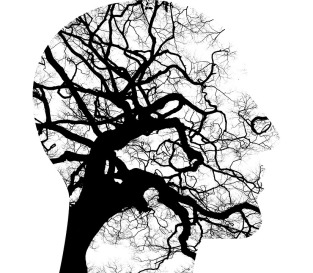Who are you in your body? Who do you see when you look at yourself beyond the reflection in the mirror?
 One of the most powerful things we can do for ourselves is give ourselves the opportunity to look beyond the reflection in the mirror and look into the amazing, powerful and capable person within.
One of the most powerful things we can do for ourselves is give ourselves the opportunity to look beyond the reflection in the mirror and look into the amazing, powerful and capable person within.Sometimes it is scary to look inside of ourselves for fear of what we might find, or for concern that we have to face some of the things we would rather avoid. This is understandable, and each of us individually have to make decisions about what we are able to do at any given time. No one else can dictate when it is appropriate for us to take the next step in our own healing or development.
It is also important to acknowledge that separating ourselves from ourselves can be a tool that ultimately takes an individual away from being able to move forward. Sometimes walking through is the option to get the answers we need at the time. Exploring this element of your work with a therapist or other people in your support network can be an amazing step in this part of your own journey.
We hear about the use of mindfulness as a tool of healing, self care and maintenance. It has almost become a buzz word within the overculture of our society to describe a variety of activities associated with meditation, or even yoga. But the art of mindfulness is so much more than a few breathing exercises and meditations. Mindfulness can be the key to a new approach of developing relationship with the self.
An important element of rooting yourself back into your body is the ability to be present, which makes mindfulness an important aspect of many people’s healing path. Any opportunity to come out of our heads, back into our bodies and into the present moment can make us more aware of the things happening right in front of us. Too often we are stuck in the past, or projecting into the future, when we haven’t the ability to be right here, right now.

Dialectical Behavioral Therapy models incorporates mindfulness as a fundamental element of treatment. The understanding that we cannot regulate our own bodies and needs if we are not observant of our present is essential. On Psychology Today’s website, mindfulness is defined as “A state of active, open attention on the present. When you’re mindful, you carefully observe your thoughts and feelings without judging them good or bad. Instead of letting your life pass you by, mindfulness means living in the moment and awakening to your current experience, rather than dwelling on the past or anticipating the future”.
Focusing on your environment, observing the moment, standing in a non-judgmental space, paying attention to our senses and slowing down our mind are some of the key elements of being in a mindful state. In the book Depressed & Anxious: The Dialectical Behavior Therapy Workbook for Overcoming Depression and Anxiety, Thomas Marra Ph. D presents the mnemonic for mindfulness as “ONE MIND”.
“One thing
Now
Environment. What is happening out there?
Moment. Immediate
Increase Senses Touch, taste, vision hearing.
Nonjudgmental. Not good or bad, right or wrong.
Describe: Words. Descriptive not prescriptive or proscriptive.”
In really considering who we are, inside of our skin, and into our amazing selves, how can you connect to these prompts about yourself? How can you be nonjudgemental about yourself? How can you describe who you are, right now. Who are you in your environment, who are you in this very moment?
Connecting to those very elements of your brilliant self can support people in the journey of learning, and re-learning who we are today. As Mindful practices are active processes, it involves getting involved in yourself and in your immediate environment. It takes being present with yourself.
Ideas for mindfulness activities to support relationship with ourselves:
-
- Breathing exercises that are 2-3 minutes to slow your breathing, focus on your senses (what do you hear, smell, feel), pay attention to your thoughts and patterns of thought.
- From where ever you are, take a moment to identify what is in your environment. How many trees do you see? What colors are present? What sounds do you hear? How many people are walking around? What types of cars are present?
- Spend some time gardening. How does the soil feel in your hands? Take a moment to connect with the earth. The earth element can be grounding and support us with getting in touch with the moment we are in.
- Listen to a favorite album or genre of music. Close your eyes and pay attention to what you hear. Spend time thinking about all the sounds and how they interplay with one another. Pay attention to the emotions that arise when you are listening to the music, think about how your body is responding to the movement of the sound.
The ability to increase our awareness of the here and now gives us more opportunity to connect with what is happening on the inside, and what goes beyond a simple reflection.

Mindful meditation helps. I use to move forward and put my thoughts in a new perspective. This is a great article. I am an overcomer with PTSD.
LikeLike
Beautiful!
LikeLike